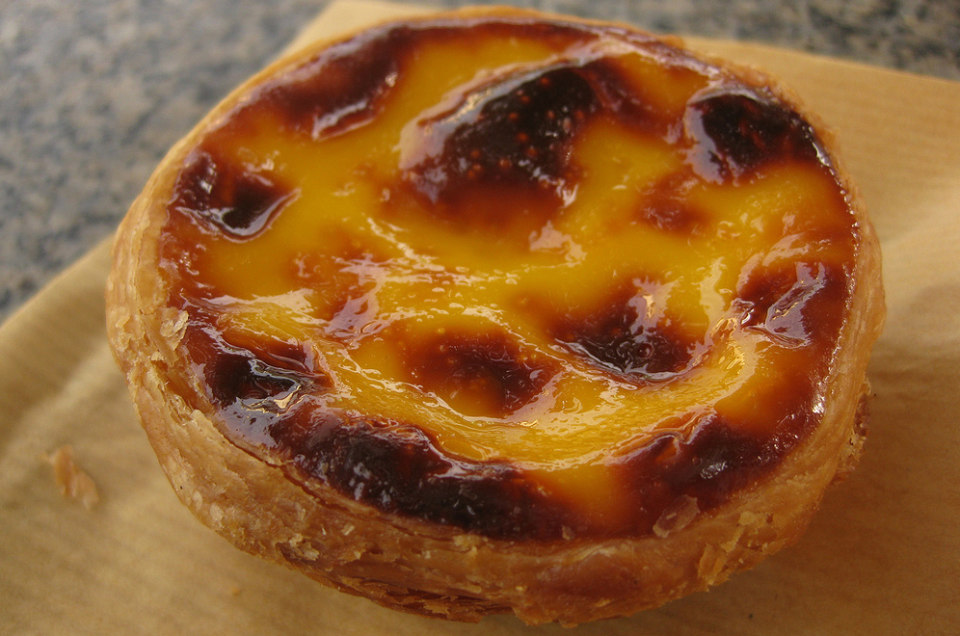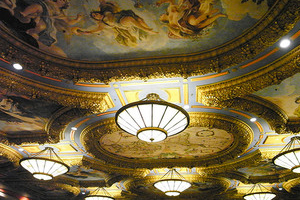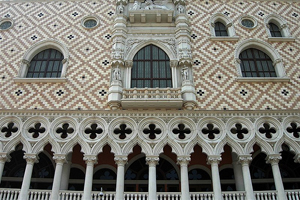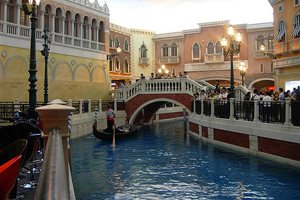This is the story of the little egg tart that could, did and still does. It all began when Englishman Andrew Stow moved to the sleepy village of Coloane, on the southern end of Macau. It was here, amidst pretty pastel Portuguese colonial buildings and narrow cobblestone-lined streets, that the former pharmaceutical chemist and his then-girlfriend set up a modest bakery called Lord Stow’s. The idea, back in 1989, was to make European style breads and baked goods that eschewed preservatives and focused on quality. What Stow didn’t know – but always hoped for – was that one day, his future creation of the ultimate egg tart, would put Coloane and his humble little bakery on the “must visit and must eat” list of just about every gastrotourist on the planet.
A few years ago, I had the good fortune of traveling through parts of China, making a multi-day pit stop on this intriguing island with its distinctly Portuguese accent. We had been staying in Hong Kong, a mere 37 miles southwest of the island’s Cotai strip. After a quick speed ferry ride across the Pearl River Delta, we landed at the newly minted The Venetian Macau Resort – a thriving addition to this part of the world’s gambling epicenter, one that continues to surpass Las Vegas in gambling revenue.
Once we explored the expansive resort, which has more floor space than four Empire State Buildings, we made our way into town to savour Macanese delicacies and hunt down those much-coveted tarts.
As a food writer, I performed my due diligence and emailed Lord Stow’s prior to visiting. Andrew’s sister Eileen responded, and informed me that the legendary “Lord” as he was nicknamed by locals, had unfortunately passed away a couple of years ago. Eileen moved to Macau from England to take over business operations and continue her brother’s legacy.
Thanks to her, the spirit of Lord Stow (1 Rua de Tassara) is alive and well in Coloane. I meet Eileen inside a small, pale yellow building with the outdoor signage indicating I’m at the right place. Instantly, I’m enveloped by the buttery embrace of freshly baked tarts. It’s a typical sub-tropical, muggy day but no matter, my salivary glands kick into overdrive with each consecutive waft of sweet, baked custard and flaky pastry. Eileen, a pretty blonde with a big smile, welcomes us into the bakery and shows us around the kitchen.
My husband is beyond thrilled to be in Macau, allowing him to give his “chopstick fatigue” dining syndrome a break after 2 weeks in China. We both stare in awe as local women work with the kind of precision and dexterity that comes with years of practice. Pastry is fitted into special moulds and what looks like a mini dam rises above the ridge, filled to just the right level with a very runny custard before baking.
I ask Eileen what Andrew was like. “He was a man who always managed to bring his dreams to life,” she says with a smile. She recalls standing in London’s Oxford Street in May 1989, “Our noses were pressed against a cake shop window. Amongst all the fancy cakes were some shriveled, little yellow and brown tarts. ‘That’s what I want to make in my bakery,’ he told me. ‘Ugh!’ I said, ‘Are you mad?’ ‘No – mine will be much better than that,’ he said. He was absolutely right.” And so, in 1989, his subtly sweet, meltingly tender concoctions with bruléed tops and a flaky crust that’s part English custard and part Portuguese Pastel de Nata, was born. It continues to be a superlative tart!
The lineups outside this out-of-the-way bakery are testament to that. Lord Stow’s creation is now iconic. In the mid-1990s, Hong Kong travelers started coming to Macau and discovering them; buying the tarts up by the dozens to take back to their friends. Then, recalls Eileen, the Hong Kong press started writing about them. By 1998, Lord Stow franchised into Hong Kong causing “egg tart fever” with copy-cat shops on every corner. That only fed the frenzy as soon as people discovered that the original home of this special little tart was right here in Macau.
I ask Eileen why the egg tart captured the fancy of locals and visitors alike? She theorizes it’s because the Chinese have their “dan tart” or Chinese egg tart at Dim Sum, so they were fascinated to hear of this Englishman doing something in a similar vein using what Eileen calls “a Portuguese dialect.” I reckon that a tart made with this much care, freshly baked and hot from the oven, is something that even non-dessert eaters would pretty much cross rivers to savour.
We buy a half dozen of the bruléed beauties and say our goodbyes to Eileen as we saunter up the road past the lovely Chapel of St. Francis on our way to a late lunch at another legendary food destination, Fernando’s (Praia de Hac Sa www.fernando-restaurant.com). Much like the tarts, the food of Macau is the result of Portuguese culinary influences intertwined with local ingredients and techniques. And sometimes, it’s these marriages of necessity, invention and culinary convenience that produce the most astounding creations. Lord Stow, you outdid yourself and your delicious vision lives on in Macau and beyond.
Macanese Delights for the “Chop Stick Fatigued”:
· Galinha à Africana- chicken peppered with fiery piri pirichiles served spatchcocked with thick, crunchy chips on the side and usually a crisp, green salad.
· Chile Crab- huge crabs served whole in a coconut milk-laced curry and chile sauce, served with stir-fry veggies.
· Pork Chop Bun- crispy outside and tender interior, these freshly baked buns contain a pan-fried (or deep fried) pork chop inside – the local version of a burger but without any of the usual toppings like lettuce or tomato.
· Ginger Milk- another popular Macanese dessert- soft pudding with hits of fresh ginger throughout. Don’t forget the egg tarts!



